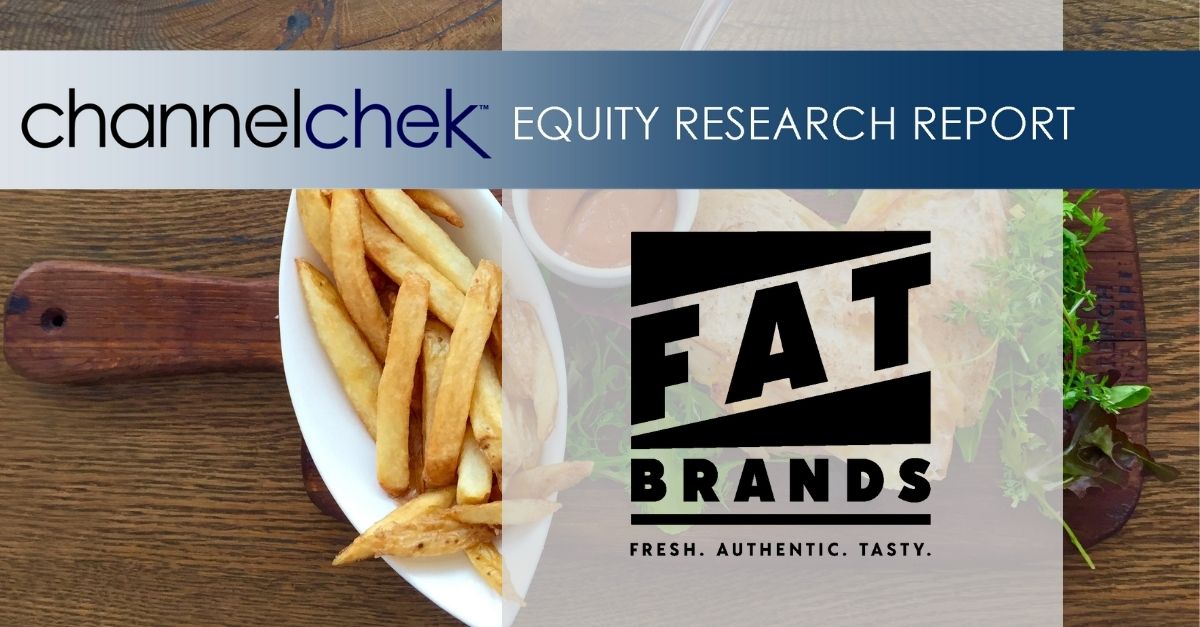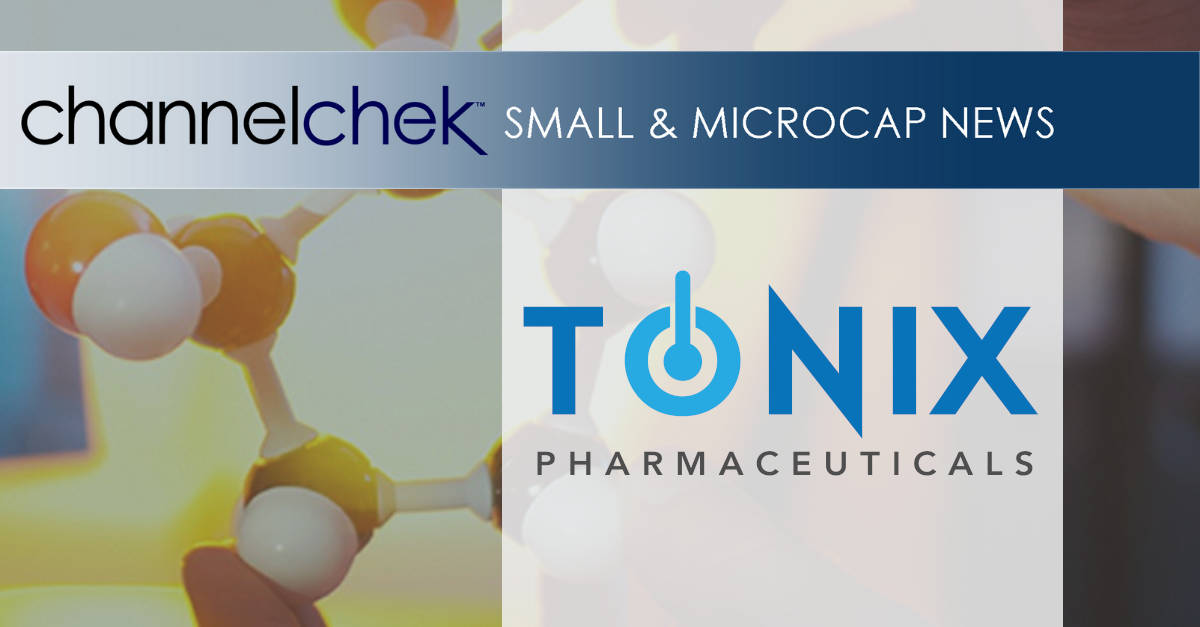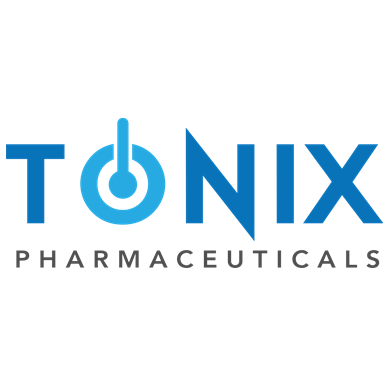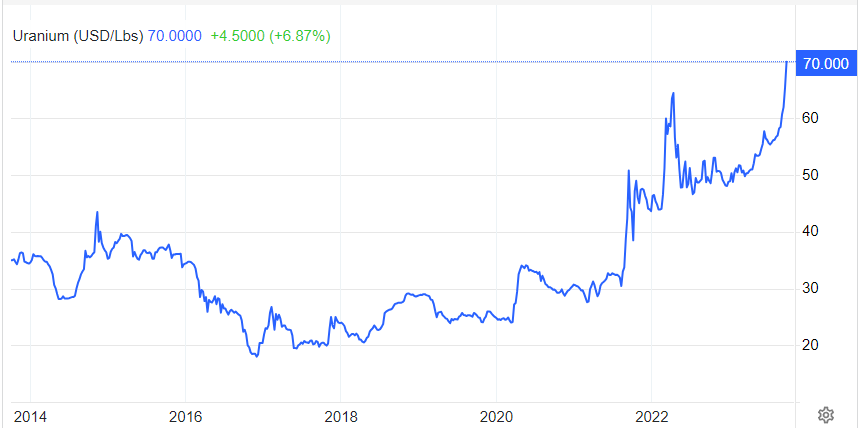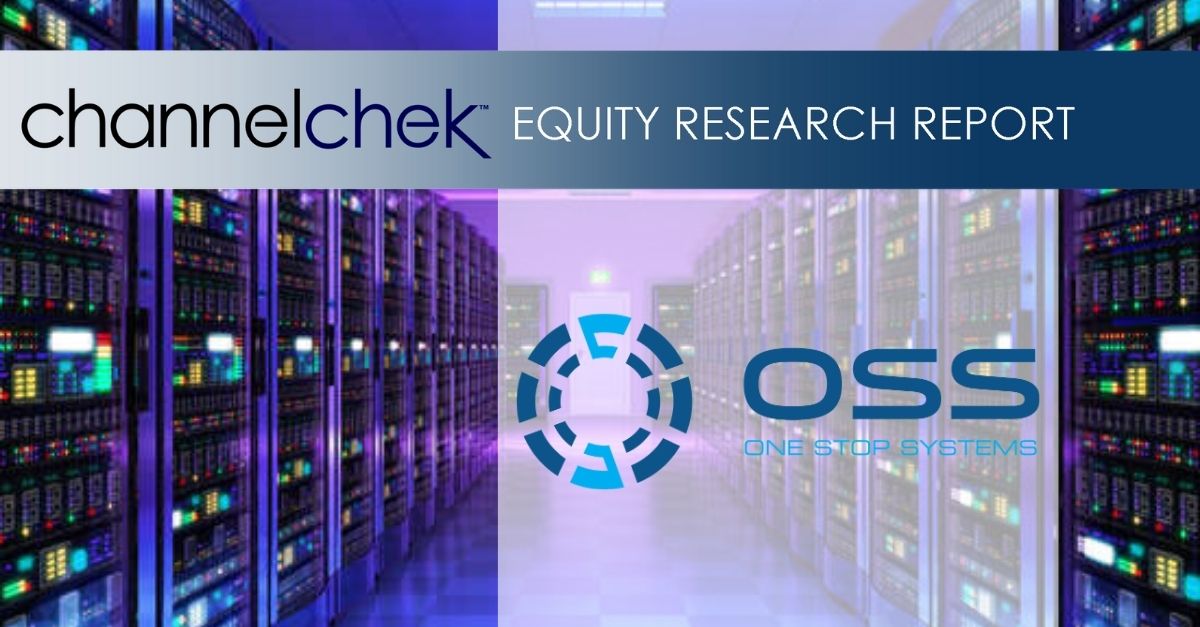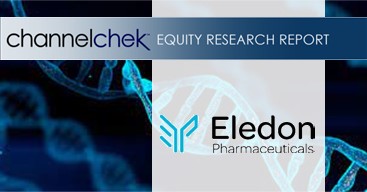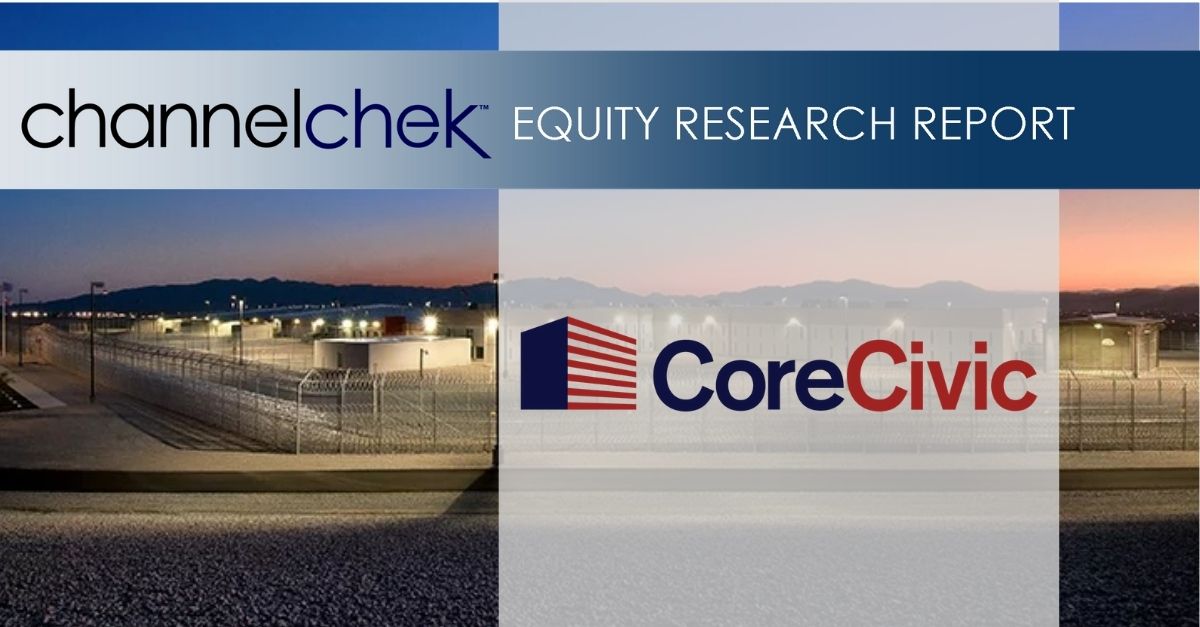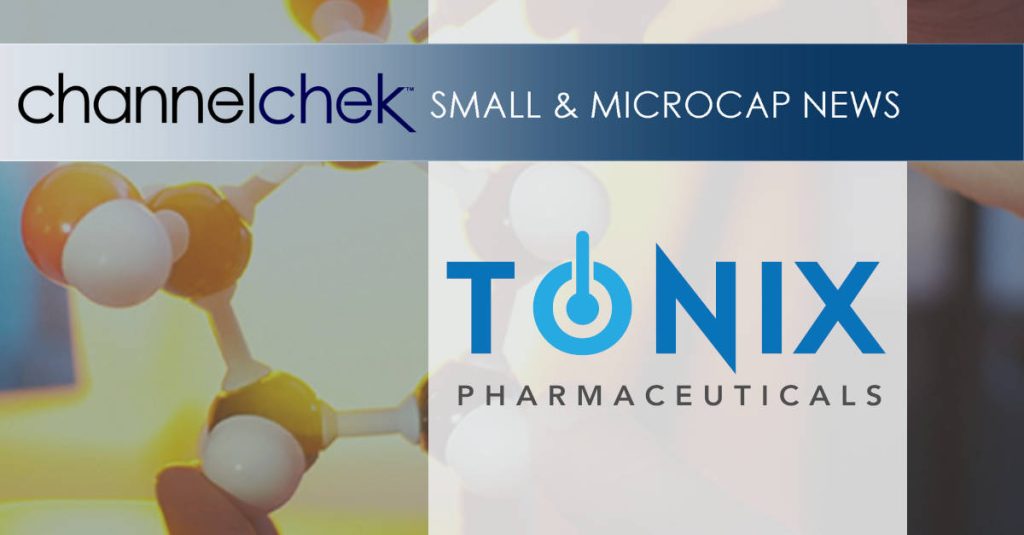Research News and Market Data on TNXP
September 27, 2023 8:30am EDT
$3 million awarded by DoD to University of North Carolina Institute of Trauma Recovery to support a proposed 180-patient, randomized, placebo-controlled trial in acute trauma patients
Investigator sponsored trial to evaluate the potential for TNX-102 SL1 to reduce the frequency and severity of acute stress reaction, acute stress disorder, and post-traumatic stress disorder (PTSD)
Acute stress disorder is identified in 13-21% of motor vehicle accidents;2,3 Individuals with acute stress disorder have an increased risk of developing PTSD; U.S. lifetime PTSD prevalence is approximately 6%4-7
CHATHAM, N.J., Sept. 27, 2023 (GLOBE NEWSWIRE) — Tonix Pharmaceuticals Holding Corp. (Nasdaq: TNXP) (Tonix or the Company), a biopharmaceutical company, today announced that the University of North Carolina (UNC) Institute for Trauma Recovery has been awarded a $3 million grant from the Department of Defense (DoD) to investigate the potential of Tonix’s TNX-102 SL (cyclobenzaprine HCl sublingual tablets) to reduce the frequency and severity of adverse effects of acute trauma. Such adverse effects include acute stress reaction (ASR), acute stress disorder (ASD), and posttraumatic stress disorder (PTSD). ASR refers to the body’s immediate response to trauma, whereas ASD represents the short-term effects of trauma, and PTSD represents the long-term effects of trauma.
“In addition to emergency care to treat and help patients recover from physical wounds, whether in the emergency room or on the battlefield, we must also address the unmet need for treatment options to address ‘invisible wounds’ that survivors may experience following a traumatic event,” said Samuel McLean, M.D., Professor of Psychiatry and Emergency Medicine at the UNC School of Medicine at UNC, School of Medicine, and lead principal investigator of the proposed study. “To address these needs, we are investigating TNX-102 SL as a potential treatment for patients who experience trauma and traumatic stress.”
The proposed Optimizing Acute Stress reaction Interventions with TNX-102 SL (OASIS) trial will examine the safety and efficacy of TNX-102 SL to reduce adverse posttraumatic neuropsychiatric sequelae among patients presenting to the emergency department after a motor vehicle collision. The trial will enroll approximately 180 trauma survivors at study sites around the U.S. Participants will be randomized in the emergency department to receive a two-week course of either TNX-102 SL or placebo.
Initiation of patient enrollment in the proposed investigator sponsored OASIS trial is anticipated in the beginning of 2024, subject to Investigational New Drug (IND) application submission and U.S. Food and Drug Administration (FDA) clearance.
The OASIS trial will build upon a foundation of knowledge and infrastructure developed through the UNC-led, $40 million AURORA initiative. The AURORA study is a major national research initiative to improve the understanding, prevention, and recovery of individuals who have experienced a traumatic event. AURORA is supported by funding from the National Institutes of Health (NIH), leading brain health nonprofit One Mind, private foundations, and partnerships with leading tech companies such as Mindstrong Health and Verily Life Sciences, the health care arm of Google’s parent company Alphabet.
“No medications are currently available at or near the point of care to treat patients suffering from traumatic events and support long-term health, whether U.S. military exposed to life-threatening events or civilians experiencing traumatic events such as motor vehicle collisions,” said Seth Lederman, M.D., Chief Executive Officer of Tonix. “Acute stress reaction and posttraumatic stress symptoms are common among civilian motor vehicle collision survivors. The AURORA study, which has collected thousands of data points from motor vehicle collisions, will allow us to better investigate the correlation between motor vehicle collisions and the emergence of acute stress disorder or PTSD symptoms. And leveraging support from the AURORA study and utilizing the DoD’s non-dilutive capital to primarily fund OASIS allows Tonix and UNC to streamline trial efficiency, reduce costs and increase trial power through enriching the target patient population.”
Added Brandon Staglin, President of One Mind, “For individuals who experience trauma and traumatic stress, the need for effective treatments is an urgent one. The OASIS trial’s focus on evaluating a promising potential treatment option exemplifies the kind of evidence-based outcomes One Mind and our partners hoped to achieve as part of the AURORA initiative’s broader efforts to improve the lives of trauma survivors.”
Acute and chronic stress disorders can affect both civilian and military populations. According to the National Center for PTSD, in the U.S. about 60% of men and 50% of women experience at least one trauma in their lives.5 In the U.S. alone, one-third of emergency department visits (40-50 million patients per year) involve evaluation after trauma exposures, and in a 2014 study involving 3,157 US veterans, 87% reported exposure to at least one potentially traumatic event during their service.8 Moreover, as many as 500,000 U.S. troops who served in wars between 2001 and 2015 were diagnosed with PTSD.9
About TNX-102 SL in Post-Traumatic Stress Disorder
Sleep disturbances in PTSD are a potential target for pharmacotherapy. TNX-102 SL is a sublingual formulation of cyclobenzaprine designed for once-daily bedtime dosing and rapid transmucosal absorption such that cyclobenzaprine plasma levels rapidly rise during the onset of sleep and first four hours of sleep, then rapidly fall through the second half of sleep through awakening. Cyclobenzaprine has potent binding and antagonist activity at 5-HT2A, α1-adrenergic, H1-histaminergic, and M1 muscarinic receptors, each of which play roles in the pharmacological management of insomnia. The sublingual transmucosal formulation of cyclobenzaprine is designed to bypass first-pass hepatic metabolism, increasing the ratio in plasma of the parent cyclobenzaprine to the long-lived active metabolite, norcyclobenzaprine, which has a longer half-life and consequently less circadian variation with once-daily dosing. The use of TNX-102 SL 5.6 mg administered daily at bedtime to reduce PTSD symptoms and improve sleep quality in patients with PTSD is supported by the results of a Phase 2 trial (AtEase NCT02277704 in military-related PTSD) and two Phase 3 trials (HONOR or NCT03062540 in military-related PTSD and RECOVERY or NCT03841773 in PTSD). 10-12 In each of these studies, early improvements in sleep were associated with TNX-102 SL treatment as measured by the PROMIS sleep disturbance (SD) scale. Moreover, in AtEase and HONOR, early and sustained improvement in sleep were associated with TNX-102 SL treatment by the Clinician Administered PTSD Scale (CAPS-5)13 “sleep disturbance” item. Primary analyses comparing change from baseline CAPS-5 total severity between TNX-102 SL 5.6 mg and placebo at week 12 were not significant in AtEase, HONOR or RECOVERY. However, in HONOR and RECOVERY at week 4, TNX-102 SL treatment was associated with an improvement in CAPS-5 total severity as compared to placebo. Moreover, secondary analyses in all three studies showed TNX-102 SL treatment was associated with benefits on the patient global impression of change (PGIC), indicating that across studies TNX-102 SL treated patients self-reported greater symptom improvement than those treated with placebo. The most common side-effects were administration site reactions described as tongue numbness or abnormal taste and reported by approximately 30% of participants. There were no unexpected safety findings. Together these studies, with approximately 650 trauma-exposed patients (included 254 patients treated with TNX-102 SL 5.6 mg), provide preliminary evidence that TNX-102 SL is well-tolerated and may promote recovery from PTSD via a pharmacodynamic mechanism of sleep-dependent emotional memory processing.
About TNX-102 SL
TNX-102 SL is a patented sublingual tablet formulation of cyclobenzaprine hydrochloride which provides rapid transmucosal absorption and reduced production of a long half-life active metabolite, norcyclobenzaprine, due to bypass of first-pass hepatic metabolism. As a multifunctional agent with potent binding and antagonist activities at the 5-HT2A-serotonergic, α1-adrenergic, H1-histaminergic, and M1-muscarinic receptors, TNX-102 SL is in development as a daily bedtime treatment for fibromyalgia, Long COVID (formally known as post-acute sequelae of COVID-19 [PASC]), alcohol use disorder and agitation in Alzheimer’s disease. The United States Patent and Trademark Office (USPTO) issued United States Patent No. 9636408 in May 2017, Patent No. 9956188 in May 2018, Patent No. 10117936 in November 2018, Patent No. 10,357,465 in July 2019, and Patent No. 10736859 in August 2020. The Protectic™ protective eutectic and Angstro-Technology™ formulation claimed in the patent are important elements of Tonix’s proprietary TNX-102 SL composition. These patents are expected to provide TNX-102 SL, upon NDA approval, with U.S. market exclusivity until 2034/2035.
Tonix Pharmaceuticals Holding Corp.*
Tonix is a biopharmaceutical company focused on commercializing, developing, discovering and licensing therapeutics to treat and prevent human disease and alleviate suffering. Tonix Medicines, our commercial subsidiary markets Zembrace® SymTouch® (sumatriptan injection) 3 mg and Tosymra® (sumatriptan nasal spray) 10 mg under a transition services agreement with Upsher-Smith Laboratories from whom the products were acquired on June 30, 2023. Zembrace SymTouch and Tosymra are each indicated for the treatment of acute migraine with or without aura in adults. Tonix’s development portfolio is composed of central nervous system (CNS), rare disease, immunology and infectious disease product candidates. Tonix’s CNS development portfolio includes both small molecules and biologics to treat pain, neurologic, psychiatric and addiction conditions. Tonix’s lead development CNS candidate, TNX-102 SL (cyclobenzaprine HCl sublingual tablet), is in mid-Phase 3 development for the management of fibromyalgia, having completed enrollment of a potentially confirmatory Phase 3 study in the third quarter of 2023, with topline data expected in the fourth quarter of 2023. TNX-102 SL is also being developed to treat fibromyalgia-type Long COVID, a chronic post-acute COVID-19 condition. Enrollment in a Phase 2 proof-of-concept study has been completed, and topline results were reported in the third quarter of 2023. TNX-601 ER (tianeptine hemioxalate extended-release tablets) is a once-daily oral formulation being developed as a treatment for major depressive disorder (MDD), that completed enrollment in a Phase 2 proof-of-concept study in the third quarter of 2023, with topline results expected in the fourth quarter of 2023. TNX-4300 (estianeptine) is a single isomer version of TNX-601, small molecule oral therapeutic in preclinical development to treat MDD, Alzheimer’s disease and Parkinson’s disease. Relative to tianeptine, estianeptine lacks activity on the µ-opioid receptor while maintaining activity in the rat Novel Object Recognition test in vivo and the ability to activate PPAR-β/δ and neuroplasticity in tissue culture. TNX-1900 (intranasal potentiated oxytocin), is in development for preventing headaches in chronic migraine, and has completed enrollment in a Phase 2 proof-of-concept study with topline data expected in the fourth quarter of 2023. TNX-1900 is also being studied in binge eating disorder, pediatric obesity and social anxiety disorder by academic collaborators under investigator-initiated INDs. TNX-1300 (cocaine esterase) is a biologic designed to treat cocaine intoxication and has been granted Breakthrough Therapy designation by the FDA. A Phase 2 study of TNX-1300 is expected to be initiated in the fourth quarter of 2023. Tonix’s rare disease development portfolio includes TNX-2900 (intranasal potentiated oxytocin) for the treatment of Prader-Willi syndrome. TNX-2900 has been granted Orphan Drug designation by the FDA. Tonix’s immunology development portfolio includes biologics to address organ transplant rejection, autoimmunity and cancer, including TNX-1500, which is a humanized monoclonal antibody targeting CD40-ligand (CD40L or CD154) being developed for the prevention of allograft rejection and for the treatment of autoimmune diseases. A Phase 1 study of TNX-1500 was initiated in the third quarter of 2023. Tonix’s infectious disease pipeline includes TNX-801, a vaccine in development to prevent smallpox and mpox. TNX-801 also serves as the live virus vaccine platform or recombinant pox vaccine platform for other infectious diseases. The infectious disease development portfolio also includes TNX-3900 and TNX-4000, which are classes of broad-spectrum small molecule oral antivirals.
*Tonix’s product development candidates are investigational new drugs or biologics and have not been approved for any indication.
- TNX-102 SL has not been approved for any indication
- Diagnostic and statistical manual of mental disorders (5th ed.). American Psychiatric Association. Pg 284
- Dai W, et al. BMC Psychiatry. 2018. 18, 188
- U.S. Department of Veterans Affairs. Epidemiology and Impact of PTSD. www.ptsd.va.gov/professional/treat/essentials/epidemiology.asp#one
- Goldstein RB, et al. Soc Psychiatry Psychiatr Epidemiol. 2016. 51(8):1137-48
- Kessler RC, et al. Arch Gen Psychiatry. 2005. 62(6):593-602
- U.S. Department of Veteran Affairs. How Common is PTSD in Adults? www.ptsd.va.gov/understand/common/common_adults.asp
- Wisco BE, et al. J Clin Psychiatry. 2014. 75(12):1338-46
- Thompson M. Time. 2015;185(12):40-3
- Sullivan GM, et al. Psychiatry Res. 2021. 301:113974
- Rauch SAM, et al. J Clin Psychiatry. 2021. 82(4)
- Ivanova A, et al. J Biopharm Stat. 2022. 32(3):441-449
- U.S. Department of Veterans Affairs. PTSD Checklist for DSM-5 (PCL-5). https://www.ptsd.va.gov/professional/assessment/adult-sr/ptsd-checklist.asp#obtain
Zembrace SymTouch and Tosymra are registered trademarks of Tonix Medicines. Intravail is a registered trademark of Aegis Therapeutics, LLC, a wholly owned subsidiary of Neurelis, Inc. All other marks are property of their respective owners.
This press release and further information about Tonix can be found at www.tonixpharma.com.
Forward-Looking Statements
Certain statements in this press release are forward-looking within the meaning of the Private Securities Litigation Reform Act of 1995. These statements may be identified by the use of forward-looking words such as “anticipate,” “believe,” “forecast,” “estimate,” “expect,” and “intend,” among others. These forward-looking statements are based on Tonix’s current expectations and actual results could differ materially. There are a number of factors that could cause actual events to differ materially from those indicated by such forward-looking statements. These factors include, but are not limited to, risks related to the failure to obtain FDA clearances or approvals and noncompliance with FDA regulations; risks related to the failure to successfully market any of our products; risks related to the timing and progress of clinical development of our product candidates; our need for additional financing; uncertainties of patent protection and litigation; uncertainties of government or third party payor reimbursement; limited research and development efforts and dependence upon third parties; and substantial competition. As with any pharmaceutical under development, there are significant risks in the development, regulatory approval and commercialization of new products. Tonix does not undertake an obligation to update or revise any forward-looking statement. Investors should read the risk factors set forth in the Annual Report on Form 10-K for the year ended December 31, 2022, as filed with the Securities and Exchange Commission (the “SEC”) on March 13, 2023, and periodic reports filed with the SEC on or after the date thereof. All of Tonix’s forward-looking statements are expressly qualified by all such risk factors and other cautionary statements. The information set forth herein speaks only as of the date thereof.
Investor Contact
Jessica Morris
Tonix Pharmaceuticals
investor.relations@tonixpharma.com
(862) 904-8182
Peter Vozzo
ICR Westwicke
peter.vozzo@westwicke.com
(443) 213-0505
Media Contact
Ben Shannon
ICR Westwicke
ben.shannon@westwicke.com
(919) 360-3039
Source: Tonix Pharmaceuticals Holding Corp.
Released September 27, 2023

